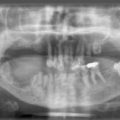6]. In order to understand these layers, we draw a comparison with the postal system (
Table 12.1 The four network layers of the TCP/IP model
| Layer | Network | Postal |
|---|---|---|
| Link | The infrastructure of cables, switches, modems and so on which allow information to be moved from one place to another | The infrastructure of vehicles and sorting offices which allow post to be moved around |
| Network | The addressing system which allows a single computer to be identified and for data to be routed to it | The addressing system which allows post to be directed to the correct destination |
| Transport | The process of packing the data and sending it into the network. Also the process of receiving data from the network | Taking letters to the post office to send and picking up received letters |
| Application | Defining the data to be sent and interpreting any data received | Writing and reading your post |
Because the network is layered in this way, any changes that occur in one layer do not affect the others, so you do not need to write a new application because you have bought a new modem.
Stay updated, free articles. Join our Telegram channel

Full access? Get Clinical Tree




